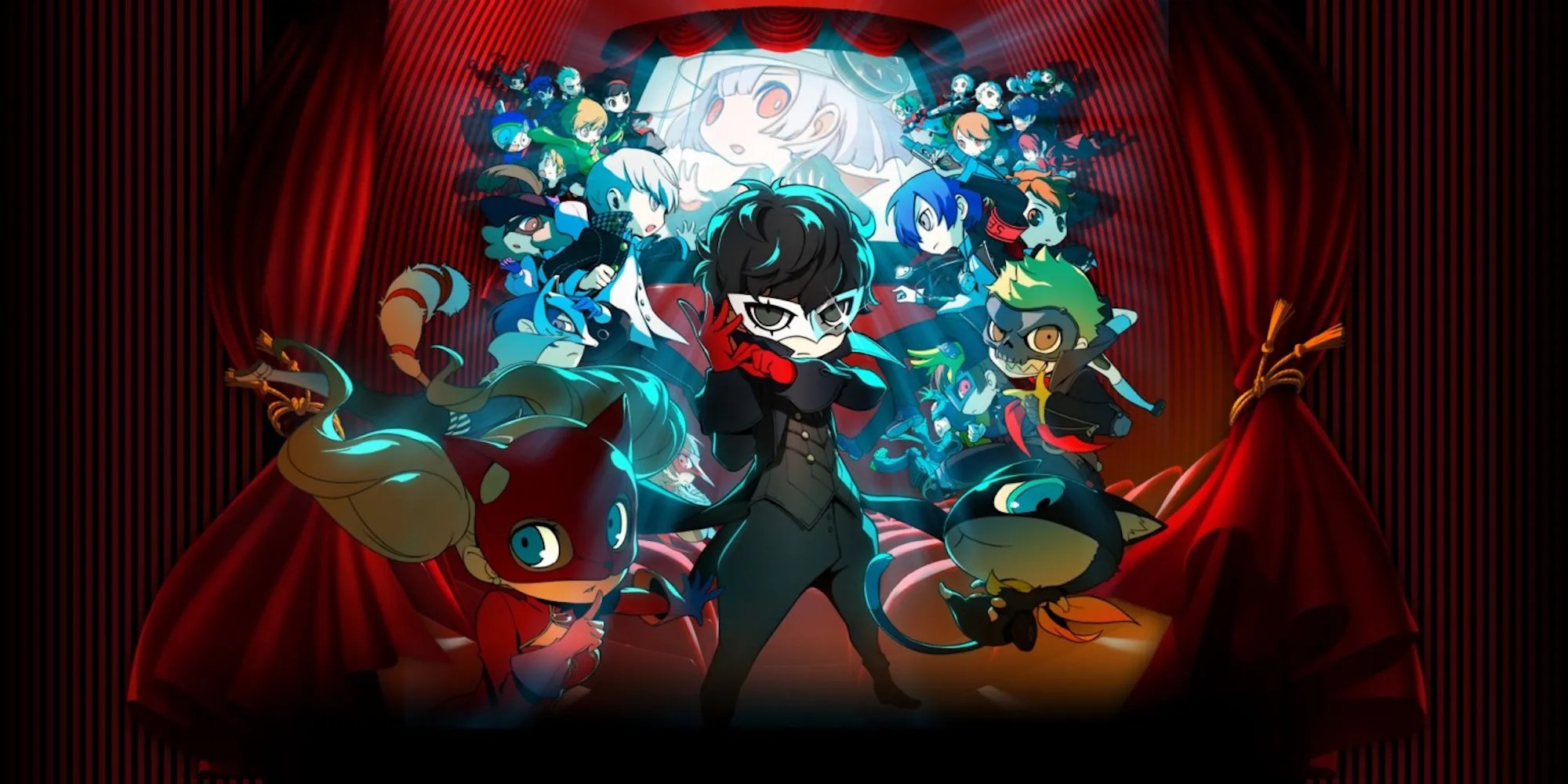Atlus has existed for a long time. They used to be a small publisher who worked on games as well. They weren’t always the JRPG juggernaut that players see them as today. For example, they made a lot of platformers on the NES likeRockin' KatsandWacky Races.
Those games had very little in terms of story and NES games, even the bigger ones likeThe Legend of Zelda, lacked epic tales. As the industry went on, so did storytelling, and Atlus has both developed and published a lot of great narratives in its history. Let’s take a look at some of their best without diving into spoilers, ranked by how engaging the stories are and not paying too close to gameplay.

Persona Q2: New Cinema Labyrinthis the second game in the crossover series which was a spinoff of theEtrian Odysseyfranchise. For those unaware,Etrian Odysseywas a throwback to old-school first-person dungeon crawler games that would giveDark Soulsfans a run for their money. The gameplay is similar inPersona Q2: New Cinema Labyrinthexcept that it is easier for beginners to the genre.
It combinescharacters fromPersona 3,Persona 4, andPersona 5. It’s not so much an excellent story as it is a great example of fan service. Players will love hanging out with all of their favorite characters even though the puns can get a bit heavy from characters like Teddy.

Tokyo Mirage Sessions #FEis another crossover RPG but it’s one of the most unlikely. ThePersonagames are all about summoning otherworldly entries and demons to aid teenagers in battle. In this game, the Persona-like deities are characters from theFire Emblemfranchiselike Chrom fromFire Emblem Awakening.
If that wasn’t strange enough, the theme of the game revolves around pop stars and idols in Japan along with an evil organization trying to brainwash the nation through music. While dark at times, the offbeat story is so strange that fans of Atlus have to experience it to believe it and the connection toFire Emblemis genuinely engaging. Maybe one day Nintendo and Atlus can collaborate again for a sequel.

Shin Megami Tensei 4was the first mainline game in the franchiseto launch on a portable system, the 3DS. Thanks to the system’s popularity, and thePersonaseries booming around this time, this entry got a lot of attention and it was an interesting place for newbies to start.
Players began as a samurai-like guardian in a heavenly realm that was peaceful save for a few demons. After a few patrols, players are eventually cast out of their kingdom and down to Earth where it is revealed Japan has experienced a post-apocalypse. That’s just one of many twists that will keep players guessing as to what’s coming next from both Heaven and Earth.
There have been a lot of games that use time travel in their plots likeRadiant Historia. In this case, choices felt like they mattered more, making players feel the guilt of their weighty decisions. What starts off as one soldier trying to right his wrongs on a patrol gone bad, turns into a nationwide conspiracy theory.
The hero, Stocke, is given a grimoire totravel back and forth through timewhich leads to some interesting puzzles to solve like how to ambush a strong set of enemies without dying time and time again. What’s going on with the world? Who are these grimoire-giving cherubs? There are so many questions that players may want a notebook to track their progress.
Metaphor: ReFantazio, like a lot of Atlus games, takes a bit to get into. That’s why it was smart of them to release the entire prelude act as a demo for the world to enjoy. Toward the end, the basic gist is revealed. Louis, the game’s antagonist, killed the king in the present and cursed his son, the unnamed Prince, fifteen years ago.
The boy still lives so players, asthe protagonist Will inMetaphor: ReFantazio, are sent to gather data on Louis to hopefully break the spell via assassination. Before that can go down, the king seemingly revives himself as a giant moon, declaring a democratic race for the throne which takes all parties on a journey throughout the land to gain the favor of the people. Again, that’s just the basic gist but it is a wild ride full of twists and turns that rival that of other crown-chasing projects likeGame of Thrones.
What’s cooler than a murder mystery in a game? Nothing. That’s whyPersona 4sticks out so much compared to the other games in the series despite all of them having engaging narratives. The story begins with Yu, a young teenager, moving in with his uncle and niece while his parents are away.
As he is adjusting to new local life, he stumbles upon a series of murders and even stranger yet, he gets sucked into a television and enters a new world. There’s a lot of strange stuff about the story, but thecore group of friends solidifiesPersona 4’slong detective story that feels a bit like a Japanese version of Scooby-Doo.
Vanillaware, who Atlus has published many games for, has had some good stories over the years. However,13 Sentinels: Aegis Rimfeels like the culmination of their storytelling. Also, unlike their other games, the story is the sole focus of the experience, told through a light novel presentation but with exploration options in mind. Also, there are tactical turn-based mech battles but they are far and few between.
It’s also a time-traveling game and figuring out how all of these characters from different eras tie together is something no one will see coming. It may not be thebest RPG in Vanillaware’s catalog, but it is certainly their best story and one Atlus should be proud of aiding the effort.